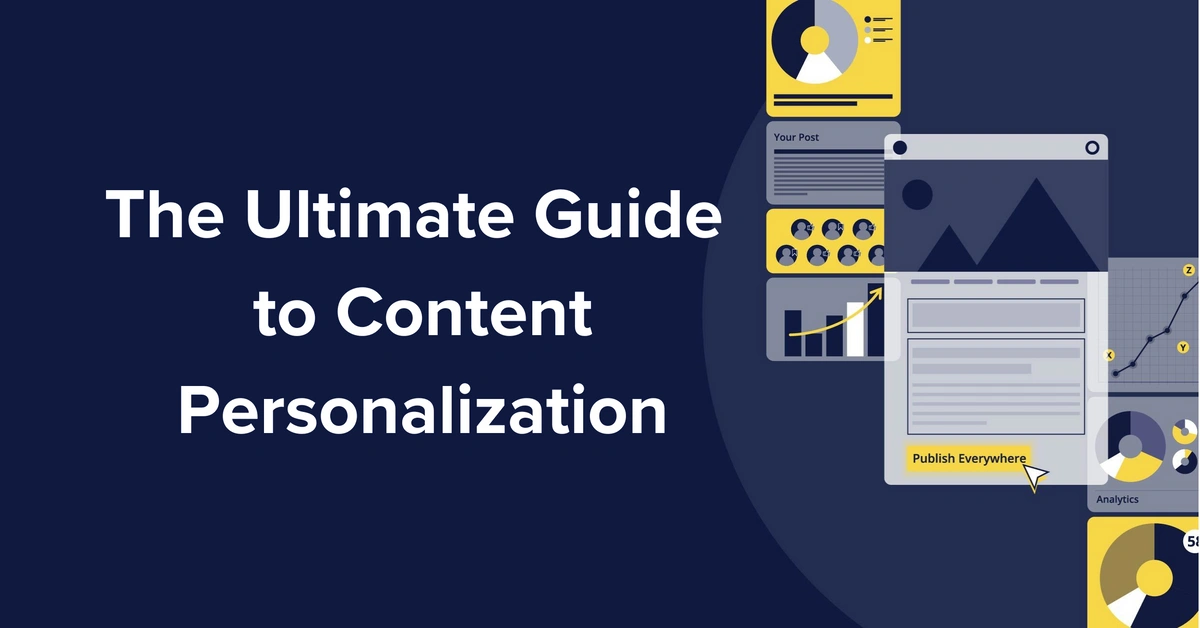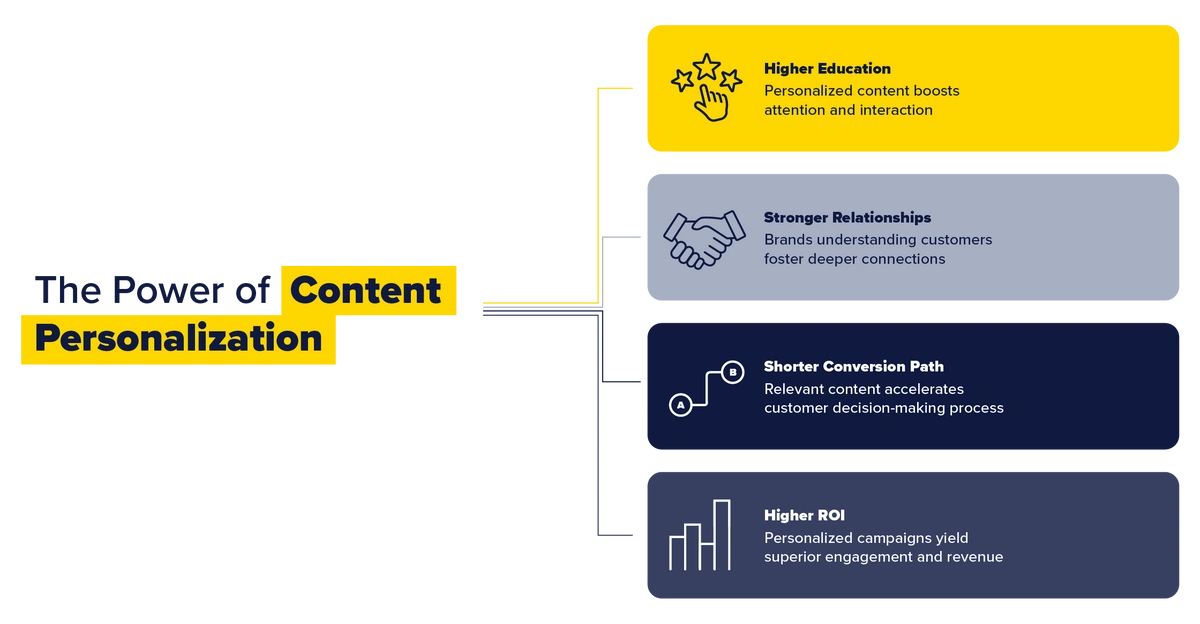
Content Strategy
The Ultimate Guide to Content Personalization
Posted by Bonnie Thompson on July 1, 2025
Think about your favorite brand: the one you return to again and again, not just because of their products, but because they just seem to get you. Every time you visit their site, the experience feels seamless. The right products show up before you even search for them. Their emails land in your inbox with tips that feel hand-picked for your needs. When you have a question, they already have the answer waiting. The whole experience is smooth, intuitive and, most importantly, makes you feel seen and valued.
Now think about the opposite experience: a brand with cluttered product pages, irrelevant emails and ads that follow you long after you’ve lost interest. Frustrating right? The difference between these two experiences isn’t luck, it’s content personalization in action.
What is content personalization?
Content personalization is the process of delivering tailored digital experiences based on an individual’s behaviors, preferences, and demographic data. It ensures that each user gets relevant content, whether they’re visiting your website, receiving an email, or engaging with you on social media.
Unlike customization, where users actively select their preferences, personalization happens dynamically, using data and automation to predict what content will be most valuable to them.
Why is content personalization important?
Today’s consumers are more informed, empowered and selective than ever before. They expect brands to understand their preferences and deliver highly relevant, personalized experiences. In fact, McKinsey reports 71% of consumers expect companies to provide personalized interactions, while 76% get frustrated when it doesn’t happen. They also noted that companies with faster growth derive 40% more revenue from personalization than slower growing companies.
When done right, personalization effectively creates:
-
Higher engagement: Personalized content grabs attention and increases interactions.
-
Stronger customer relationships: People prefer brands that “get” them.
-
A shorter path to conversion: Relevant content speeds up decision-making.
-
Higher ROI: Personalized campaigns outperform generic ones in engagement and revenue.
Now that you understand why personalization is essential, let’s explore how it actively shapes the customer journey, reducing decision fatigue, increasing engagement, and ultimately driving conversions.
How content personalization reduces friction and increases buying behavior
At its core, content personalization reduces friction, enhances relevance, and removes cognitive barriers that slow down or prevent customers from making decisions. The more seamless and intuitive a brand’s experience, the more likely a prospect will convert to a loyal customer. Here’s how content personalization accomplishes that goal:
-
Minimizes decision fatigue. When faced with too many choices, customers often abandon their decision. By tailoring content and product recommendations based on a user’s browsing behavior, purchase history, or preferences, personalization narrows the options to the most relevant, helping customers choose faster and more confidently.
-
Increases perceived value. Consumers assign higher perceived value to experiences that feel uniquely tailored to them. Content personalization signals that the brand understands their needs and values them as an individual.
-
Creates a sense of reciprocity and emotional connection. Research from Salesforce found that 84% of customers are more likely to buy from brands that treat them as a person, not just a number. By personalizing website experiences, emails, and customer touchpoints, brands foster a psychological sense of reciprocity, where customers feel inclined to engage, trust, purchase, and become loyal fans.
-
Increases conversion rates through real-time triggers. One of the most powerful aspects of personalization is its ability to leverage real-time behavioral triggers to nudge customers toward completing a purchase. For example, personalized cart abandonment emails with the specific product included are far more effective than a generic follow-up email.
-
Drives repeat purchases and higher customer lifetime value (CLV). Loyalty-driven personalization (like VIP programs, exclusive discounts, restock reminders,and value-add post-purchase communications) rewards repeat customers, deepens engagement, and boosts life-time retention.
By removing friction and making every touchpoint relevant, brands can build deeper trust and increase customer lifetime value.
Examples of content personalization
Content personalization takes many forms, depending on where and how you interact with your audience. Here are some common examples of personalization within some of the most critical types of content:
-
Website personalization: Dynamic homepage experiences tailored to user preferences and personalized product or content recommendations.
-
Email content personalization: Personalized subject lines and messaging, and automated emails triggered by user behavior (like cart abandonment, browsing history, previous purchases).
-
Blog and content hub personalization: Dynamic content recommendations based on previous articles read and personalized CTAs tailored to where the user is in their buyer journey.
-
Ecommerce and product personalization: AI-driven product recommendations and exclusive discounts for returning customers.
-
Omnichannel personalization: A seamless experience across platforms like website, email, social media, mobile, and ads, all working together to create a consistent user journey.
Now that you know what content personalization is and why it’s matters, the next step is learning how to do it. Read How to Build an Effective Content Personalization Strategy to learn how to create a personalization strategy, overcome common challenges, and apply it to get results.
ButterCMS is the #1 rated Headless CMS
Related articles
Don’t miss a single post
Get our latest articles, stay updated!














Bonnie Thompson is a content marketer with over six years of experience in the tech industry, helping brands create meaningful content that empowers readers to achieve their business goals. When she’s not writing, you’ll find her hiking in the Blue Ridge Mountains, planning her next national park adventure, or enjoying Friday night pizza and movie nights with her family.